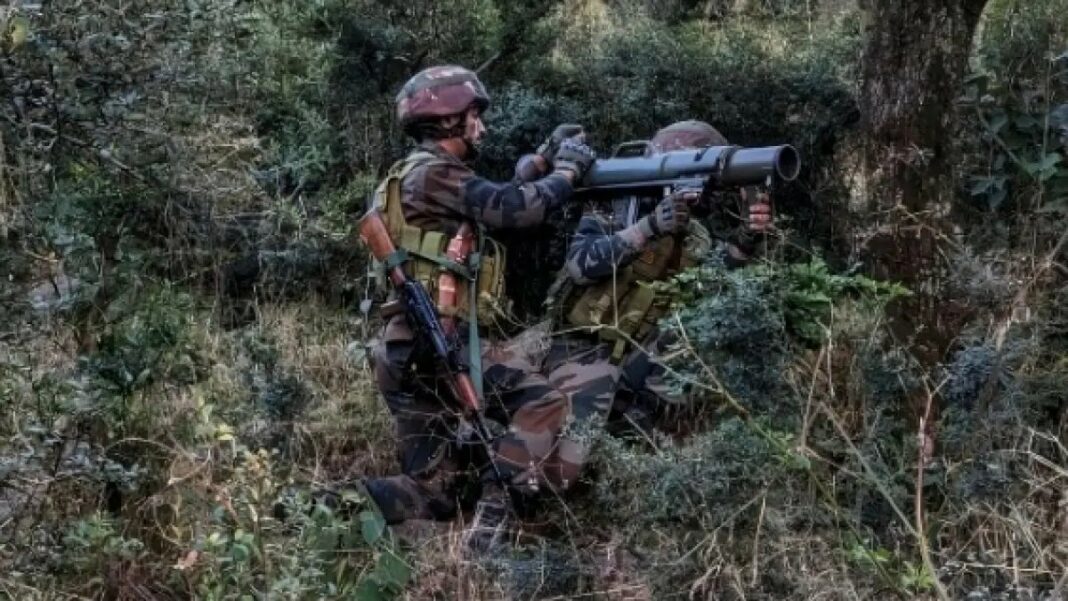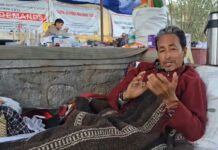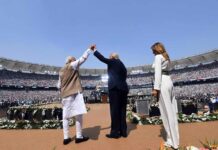Newspapers reports have alleged killings of civilians in Army custody in the Poonch-Rajouri sector, which include:
- Army picked up nine civilians for questioning from a nearby village after five soldiers were killed and two injured when terrorists ambushed their vehicles in Surankote area, taking away all weapons and mutilating bodies of the two soldiers.
- The civilians were allegedly tortured during interrogation and three of them died, which was supposedly video-taped.
- One report says bodies of the civilians were handed back to their families. Another says the bodies were found at the site where terrorists ambushed army vehicles.
- Army has removed three officers including the Rashtriya Rifles (RR) Sector Commander (Brigadier). An inquiry is underway to establish if the SOP for terrorist-related incidents was violated. Compensation for the families has been announced.
- Sarpanch of Bufliaz village and relatives of the deceased say they are among those seen on videos being beaten by “unidentified soldiers”. Army has affirmed picking up the civilians for interrogation but has not commented on the torture videos and killings.
- Police filed an FIR for “murder” by “unidentified soldiers”.
- Defence Minister Rajnath Singh visited families of the killed civilians to offer condolences but said nothing for the martyred soldiers and expressed no sympathy for families of soldiers whose mutilated bodies perforce were cremated inside coffins.
According to the media, J&K’s BJP chief Ravindra Raina met families of the dead civilians and said culprits who tortured the Gujjars to death would get “big punishment”. In 2002, Ghulam Ali Khatana (a Gujjar) was nominated to Rajya Sabha but now Gujjar-Bakarwal are annoyed with the inclusion of ‘Pahari Ethnic Group’ in the Scheduled Cast list.
From the media it appears there are multiple videos of the torture. Would Army permit videotaping inside its camp? One source says the video “surfaced” from a village in Poonch.
The killings raise multiple questions. Would Army handover bodies as proof they were killed in the camp or leave bodies at the ambush site with locals knowing what happened in the ambush? If they were killed inside the camp, wouldn’t it be ensured bodies are never discovered, maintaining that they were released after interrogation and/or kill all of them similarly?
From personal experience one can say Gujjars-Bakarwals are highly nationalists, which is why the Abdullah and Mufti regimes in J&K treated them with disdain. But the hill region of Surankote area has often been terrorists infested. Army conducted Operation ‘Sarp Vinash’ here in 2003 (January-May) killing 65 terrorists. The main terrorist complex was near the Hilkaka transient centre of Bakarwals.
Year 2023 witnessed a string of operations in the area. 55 persons were killed, including 20 Army personnel and 28 terrorists. Presently, 25-30 terrorists are estimated in the area but there could be more considering the expanse of the thickly forested region.
Terrorists operating for long require local support, which may be willingly or under threat of abduction/killings. The narrative of Army killing three civilians and releasing six after interrogation perhaps hides more than what meets the eye. The Pakistan-China nexus in Kashmir would do anything to discredit the Indian Army, exploiting the pre-election period and Gujjar-Bakkarwal rift with the Centre.
On November 3, 2014, two civilian youth were killed and two injured when their vehicle jumped three check-posts and was fired upon by soldiers in Budgam area of J&K. Police filed an FIR accusing soldiers for “intention to kill” although they were on duty to check all vehicles. Newspaper reported the Northern Army Commander apologized to the families and one JCO and soldiers who opened fire faced summary court martial, while other reports denied any punishment meted to them.
Within minutes of the incident, the then Defence Minister tweeted that action will be taken against the culprits. Subsequently, the Prime Minister speaking at a public rally in Jammu, said that for the first time Army was made to admit its mistake, made to apologize and punished. Governor rule was imposed in J&K with hung assembly results in December 2014. Later, the PDP-BJP alliance assumed power in J&K.
There is speculation that killing the three civilian and torturing others maybe the handiwork of terrorists/political proxies (after release by the Army) and ordering all civilians to abide by their narrative on fear of death. Why would Pakistan miss such a chance to destroy the general mood of kinship?
More significant is the observation that the instant video of torture was shot elsewhere, not in the Army camp
Currently, the debate on social media is whether the Army is being directed to adhere to the political narrative (like in Manipur) for electoral gains? The NIA involvement on purely military operations, which began with the 2016 terrorist strike in Uri, is also being questioned whether it is to suit the Centre’s narrative? The media (Pakistan-funded included) will naturally tow the official line but scholars have also pointing out politicization of the Armed Forces.
Culprits in the instant case must be punished but what about annual deaths in police custody 2017-2022 (never below 100 and 175 in 2021-2022), highest in Gujarat at 80, nearly 60% in last three years and 75% over last two years pan India, with disciplinary action initiated in just one case? Isn’t selective application of law hideous, asks a veteran-scholar?
Constraints, under which the Army is operating in J&K may not be known to the majority. For example, allegations of the army raping 100 women in Kunan-Pushpora, was proved completely false after one year of international and national intervention. Yet, some with “bird’s eye-view” say officers must be gentlemen, quoting the My Lai massacre or Bosnia for sensationalizing. Can we visualize what the US-led West would do if their soldiers were beheaded and mutilated, what Israel is doing in Gaza and even before the war, Israel refused any probe against IDF soldiers shooting dead foreign correspondents?
Above is not to condone custodial deaths but we must acknowledge constraints under which soldiers operate in counter-insurgency, plus how election-centric policies and politico-terrorist nexus affects the psyche of soldiers, few examples of which are as under:
- In October 2018, 22-year old Sepoy Rajendra Singh died of stone-pelting in Anantnag district, J&K. Belonging to village Badena of Pithoragarh district, Uttarakhand, he is survived by his parents. No FIR was lodged by J&K Police.
- Tablighi Jamaat, linked to JeM, Huji and HuM and whose membership is open to Pakistani military officers, was permitted to congregate in Delhi’s Nizamuddin Markaz in March 2020 immediately after a similar event in Pakistan.
- Yasin Malik (JKLF) shot four IAF personnel on the outskirts of Srinagar on January 25, 1990; Sqn Ldr Ravi Khanna, Corporal DB Singh, Corporal Uday Shankar and Airman Azad Ahmad. Arrested much later, he is still not hanged because of vote-bank politics.
- Shah Faesal, who resigned from the IAS in 2019, was stopped at IGI airport going to Turkey for organizing radical activities in conjunction with Turkey-Pakistan and later floated a political party, is back in the IAS and posted as Deputy Secretary in the Ministry of Culture.
- Nagaland Police was set to prosecute personnel of 21 Para (SF) on false charges of killing civilians but Supreme Court stepped in and defence ministry denied permission to Nagaland police..
- On June 24, 2023, an Army column arrested 12 KYKL terrorists, including mastermind of the ambush on a convoy in June 2015, killing 18 Army personnel. But a 1,000 plus women majority mob led by Manipur MLA Thaounaojam Shyam Kumar Singh forced the Army column to release these terrorists.
- Zakia Wardak running the Afghan Embassy at New Delhi has intimate links with the Taliban.
Finally, undertaking another Op ‘Sarp Vinash’ or another ‘surgical strike’ to influence elections are only temporary solutions. The need is for pro-active sub-conventional cross-border operations on regular basis for effective deterrence. We have the wherewithal for it but do we have the political will?
The author is an Indian Army veteran. Views expressed are personal.



















